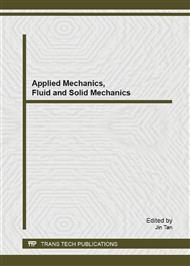p.231
p.235
p.240
p.247
p.253
p.259
p.263
p.269
p.277
Effect of Chemical Treatment on Mechanical Properties of Municipal Solid Waste and Banana Fiber Reinforced Polymer Composites
Abstract:
Hybrid composites of municipal solid waste (MSW)/banana fiber reinforced urea formaldehyde are prepared with different filler ratio. Mechanical properties such as tensile, flexural and impact strengths are investigated as a function of total volume fraction (Vf) of filler (MSW and banana fiber) and its chemical modification. The mechanical properties are found to be high at 40% Vf of filler which indicates effective stress transfer between fiber and matrix. It is observed that presence of banana fiber provides better mechanical properties to composites. The chemically treated composites showed higher tensile and flexural strength compared to untreated composites due to the strong interfacial interaction between the resin and fiber.
Info:
Periodical:
Pages:
253-258
Citation:
Online since:
December 2013
Authors:
Keywords:
Price:
Сopyright:
© 2014 Trans Tech Publications Ltd. All Rights Reserved
Share:
Citation:


